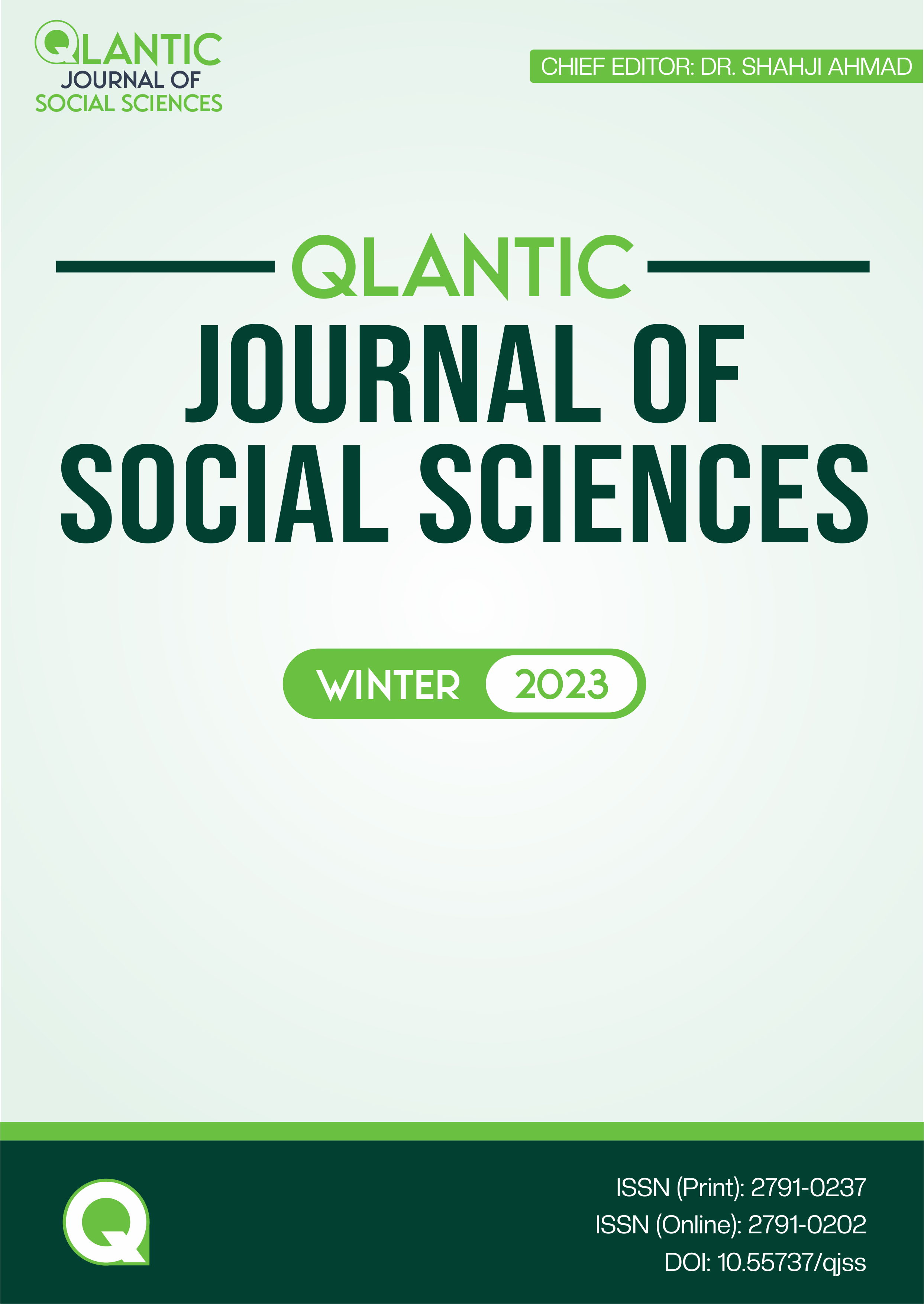Street Crimes: A Case Study of District Swabi (KP)
DOI:
https://doi.org/10.55737/qjss.184964929Keywords:
Street Crime, District Swab, KP, Police, Public PlacesAbstract
The study focused on street crimes in Swabi city, KP, exploring their profound impact on societal stability. Street crime, encompassing criminal activities in public places, poses significant threats to social integrity, limiting residents' open movement. Perpetrated mostly by deviants within neighborhoods, street crimes are symptomatic of legal, economic, educational, and moral declines. The study covered residents from five police jurisdictions in Swabi, including Swabi, Kalu Khan, Yar Hussain, Parmolo, and Chota Lahor Swabi KP, with 50 male residents interviewed using an interview schedule for data collection. Employing a quantitative approach, the research aimed to uncover the causes and consequences of street crimes. Findings revealed a correlation between drug use and street crimes, with respondents highlighting the role of inadequate child socialization. Common offenses in Swabi included mobile snatching and bike theft. Moreover, the study provided evidence linking poverty and lack of education as significant contributors to the prevalence of street crimes within the community.
References
Alexander, F., & Stuab, H. (1956). "The Criminal, the judge and the Public", gleneoe,3, Free Press, 52-73.
Ashley, D. (2004). The Safe streets Violent Crime” https:www.streetcrimes.com/review
Beinaert, S., Anderson, B., lee, S., & Utting, D. (2001), Youth at Risk? A national survey of risk factors, protective factors and problem behavior among young people in England, Scotland and Wales. Communities that care.
Campbell, S., Harrington, V., & Miller, J. (2000). "Youth Crime: Findings from the 1998/1999 Youth lifestyles Survey". Home Office research Study, No.209.Home office.
Galelo, G. (2001). Review of Street Crimes. Oxford University press, Oxford
Graham, J., & bowling, B. (1995). "Young People and Crime". Home Office Research Study, No.145.HMSO.
Hale, C. (1999). "The labor Market and post-War-Crime Trends in England and Wales in Carlen P and Morgan R (eds) Crime Unlimited? Questions for the 21st century". Macmillan.
Hameed, I. (January 3, 2018), The Express Tribune(newspaper)
Harrington, V., & Mayhew, P. (2001). "Mobile Phone Theft". Home office Research study. No.235.Home office.
Mori. (2000)."Youth Survey: research study conducted for the youth justice Board". Youth Justice Board.
Nadir, K. (17, July,2016). Deployment of Police. Dawn(newspaper) https://www.lawhandbook.sa.gov.au/ch12s01.php
Qadri, A. M. S. (2009). "Ahmed Siddiqui's Criminology, Problems and Perspectives(5th ed)", P,92-95, 403,407,436-439,495. Eastern Book Company, Lucknow
Tappan, p. (1960). Crime, Justice and Correction. P,23-27 New York.
Tegan, B. F. (1986). "Introduction to Criminology". Theories, Methods (Criminal,P,58-88, 74-83,82-88, Library of Congress Cataloging-IN-Publication Data, Nelson hall mc, Publishers,3 North canal street, Chicago.
Vold, G., Bernard, T., & Snipes, J. (1998). "Theoretical Criminology" Oxford University Press, Oxford.




